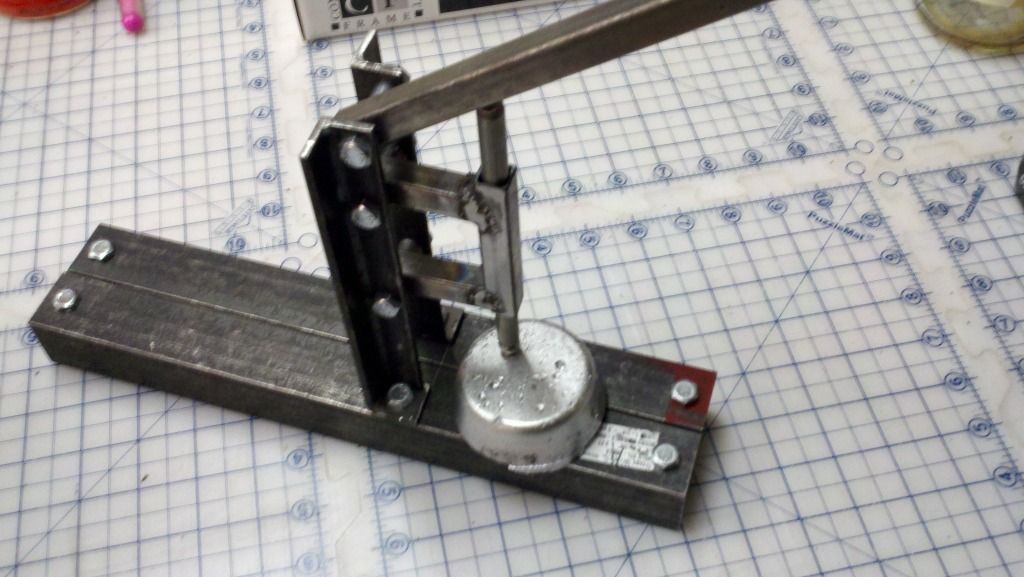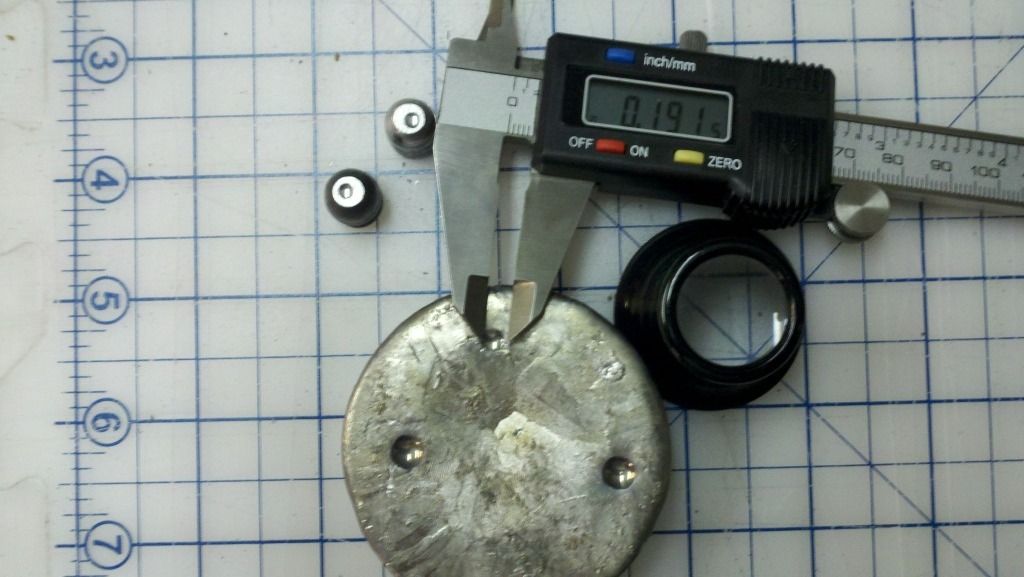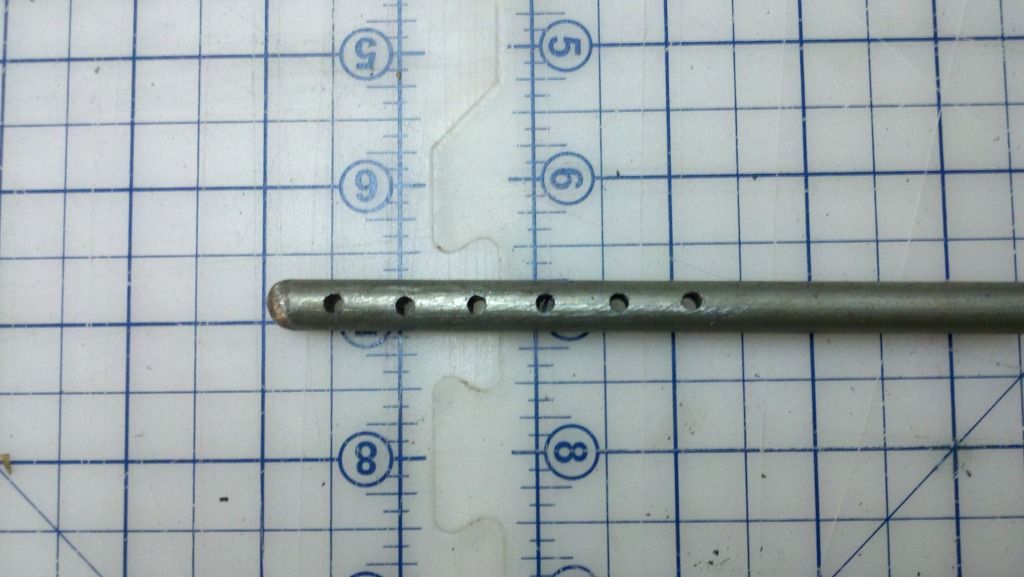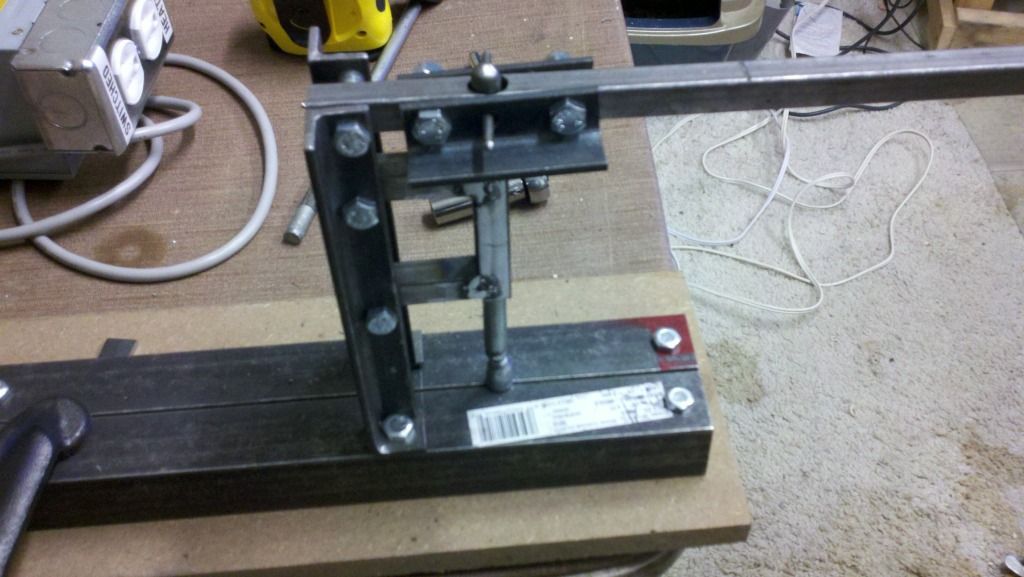So I spent the day manufacturing a Brinell Hardness Tester of my own design. Here's a photo of the finished product.
The top lever presses on the indenter rod which in turn presses on a .375 inch ball bearing. The lever rod is about 32 inches long with notches cut every 5 inches. Based on the fulcrum distances I can calculate the leverage that multiplies the fixed weight hung from one of the notches. The indentor rod is a fixed 1.75 inches from the fulcrum.
Using this formula: <Indentor force> = (<weight in lbs> * <inches from fulcrum>) / 1.75 inches. If I hang a 20lb weight at 20 inches from the fulcrum the force on the indenter is 228.5 lbs.
Here are several test subjects and what I use to measure the indentation diameter. I use the loupe to get a more accurate caliper reading.
The reading on the caliper is the diameter of the indentation of the shown ingot smelted from lead flashing material. When I plug in the numbers to the BHN formula using this calculator: a force of 228.5 lbs, indentor diameter of .375 inch and indentation of .1915 inch, I get a BHN of 5.18. I'd say that's purty darn close to what I'd expect of lead flashing, which is supposedly pure lead!
Given that my control test is close to an expected 5, I tested two other cast boolits. One is a moly coated Bear Creek Bullets casting. It was a bad casting that I wasn't going to load anyway. I also tested one of the bad castings from my casting session yesterday. The results are:
Bear Creek Bullets - 11.54 - indention diameter of .131
My Boolit - 11.63 - indention diameter of .1305
Holy cow! My castings are almost exactly the same hardness (harder in fact) than the purchased cast boolits!
For giggles and grins I took a scrap of the steel I used to build the tester and tested it. I was surprised that I was able to easily see the indentation in the steel. Of course this isn't very hard steel and is made for easy weldability.
Project Steel - 94.23 - indentation diameter of .0465
I did take pictures of whole build, so if anyone is interested I can make a how-to posting. There are a lot of photos so it will likely take 2-3 posts to get all the steps. FIY, there is some welding involved for the indentor guide tube.

|
   
   
|


|






 Reply With Quote
Reply With Quote












